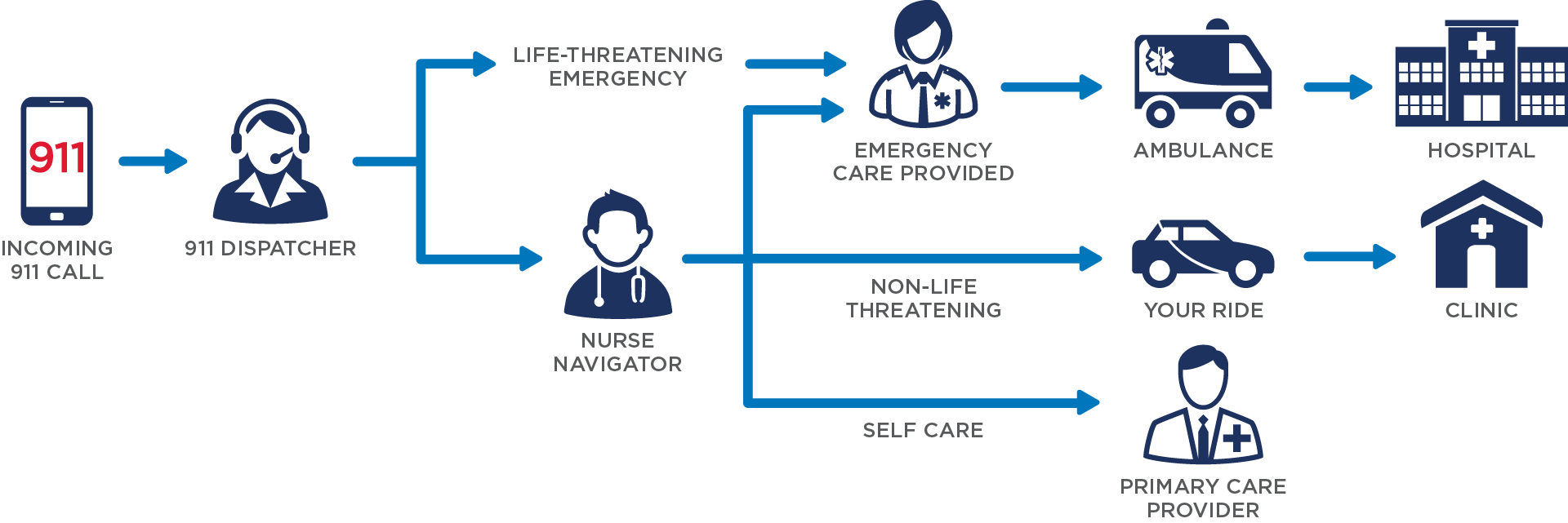
911 Nurse Navigation
Most Experienced Program Offering More Complete Care to 911 Callers
An estimated 30% of calls to 911 don’t need an immediate EMS response. These callers need help, but often don’t know where else to go, or aren’t able to get to the care they need.
In the past, the only tool communities had to help callers with non-life threatening needs was to dispatch EMS and send the patient to the Emergency Department (ED). This diverted EMS resources from urgent, life-threatening issues and led to higher costs for patients who didn’t require a visit to the ED.
So Global Medical Response (GMR) pioneered 911 Nurse Navigation in 2018 as a way to provide care to these callers, often without the use of an ambulance. In communities across the country, GMR’s nurse navigators use evidence-based clinical protocols to screen a patient’s current condition, providing an appropriate resource to meet the caller’s unique healthcare needs, whether that’s dispatching a ride-share to urgent care, an appointment at a Federally Qualified Health Center, or virtual care with a physician on the spot.
How it works
As the most experienced provider of 911 Nurse Navigation, GMR's five-level screening system ensures patients receive the right resource at the right time, in the right setting to achieve the right outcome at the right cost.

Better for Patients and Communities
In 2024, more than 50,000 911 callers from across the country were screened by GMR’s 911 Nurse Navigation program and redirected to more clinically appropriate and cost-effective care options.
- Every 10 minutes someone called 911 for help and GMR’s Nurse Navigators connected them to the best healthcare resource
- $21 million estimated in savings for patients, first response agencies, payors and health systems
- 81,000-unit hours of capacity back into the EMS system by avoiding unnecessary responses, ambulance transports and ED visits
Better for EMS Providers
Our first responders in 911 Nurse Navigation markets are also more satisfied with their work. GMR’s data indicates decreased burnout and improved satisfaction when providers are not overly burdened with low acuity calls. In GMR’s 911 Nurse Navigation markets:
- 4.5% increase in field providers who stated they feel like their job is important
- 6.0% increase in field providers who stated they feel like their training and skills are well utilized
- 11.6% increase in field providers who stated they have high job satisfaction
Contact Us
Learn more about GMR’s 911 Nurse Navigation program and how it can benefit your community and EMS system. Call us at 855.267.0911 or schedule a follow up conversation.